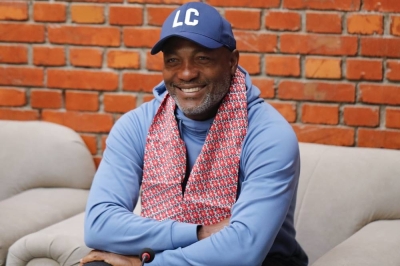The US has become the world power in ice dance
NEW YORK: Even without the defending Olympic champions, the proof is right there on the ice: The US has become the world power in ice dance.
For the second straight year, three American couples have made the Grand Prix Final, which starts Friday in Marseille, France. US champions and world silver medalists Maia and Alex Shibutani; 2015 national champs Madison Chock and Evan Bates, and three-time US bronze medalists Madison Hubbell and Zach Donohue make up half the field — for a second consecutive season.
That sure impresses Charlie White, who with Meryl Davis became the first Americans to win ice dance gold at the Olympics, in 2014.
"I'm not sure there's a better way to show the dominance of US ice dancing better than having three teams making the Grand Prix Final two years in a row," he said. "It's been amazing to see these three teams proving themselves time and time again at these stacked Grand Prix events.
"The experience gained, and consistency shown by this group of US dance teams will certainly help their chances at giving their best showing at an event like the Olympics."
Chock and Bates and the Shibutanis already have been down that road, finishing eighth and ninth in Sochi. Since then, their performances have been on a steady upward course, with the brother and sister Maia and Alex Shibutani winning nationals this year and finishing second at worlds. Chock and Bates took the US title in 2015 and finished just behind the Shibutanis at this year's worlds.
All of today's couples owe credit to their — uh, foreskaters? — for taking ice dancing from the outcast stepchild in American figure skating to the top of the world. And they know it.
"I think it is sort of a product of the growth of the sport in our country spearheaded by Meryl and Charlie, and before them, Tanith (Belbin) and Ben (Agosto), Peter (Tchernyshev) and Naomi (Lang), and back to Liz (Punsalan) and Jerod (Swallow)," said Bates, who teamed with Chock in 2011. "We have been working on this for a long time, the last few decades, really. Now, in the world of ice dancing we are recognized as the top country."
Added the Shibutanis: "Earlier in our career, we trained with both Meryl and Charlie, and Tanith and Ben. Their accomplishments have been inspiring and have done a lot to improve the visibility of ice dance in the US They are our friends and they have always been very supportive and encouraging. We are working to continue to build on what they started."
For decades, Russians dominated ice dance, in part because of the coaching available in the Soviet Union and then in Russia. Other than the brilliant Britons Jayne Torvill and Christopher Dean and their mesmerizing performances in the 1980s, it was rare for anyone else to make frequent visits to the medals podium.
Today, it is rare when an American couple does not win a gold, silver or bronze.
"I think that the US has a particularly great developmental program that has created an abundance of talented athletes representing Team USA on the international circuit," Hubbell said. "For ice dance in particular, US Figure Skating has made huge strides in becoming one of the most competitive federations. I have had the support of US Figure Skating for over 10 years now, and I grew up training and competing with Chock and Bates, and the Shibutanis. I believe it is the supportive, competitive environment that we have grown up with that has pushed us to have three teams in the Grand Prix Final for the second season consecutively."
Also pushing are the coaches, some of which were trained in the Russian systems. Igor Shpilband, then Natalia Linichuk and Gennadi Karponosov, worked with Belbin and Agosto. Marina Zoueva guided Davis' and White's careers.
Shpilband works with Chock and Bates, and the Shibutanis work with Zoueva.
"No. 1, you have to credit the coaching," said White, who also won Olympic silver in 2010 and took six straight US championships with Davis. "Skaters can work themselves into the ground all day every day, but unless they have the choreography and expertise of top-level coaches, that work will not pay off."
But there's more to it than that, Davis insisted. When the three US duos compete in the Grand Prix Final against 2010 Olympic champions and 2014 runners-up Tessa Virtue and Scott Moir of Canada — the other surpassing ice dance couple of the last decade — plus France's Gabriella Papadakis and Guillaume Cizeron, the two-time defending world champs, the Americans will bring something else to the rink.
"No. 2 is the incredible hard work and dedication to the sport by the US ice dance teams," White says. "Coming from the history that we have in the sport internationally, I think US ice dancers always feel they have something to prove. And right now they are proving themselves time and time again."






